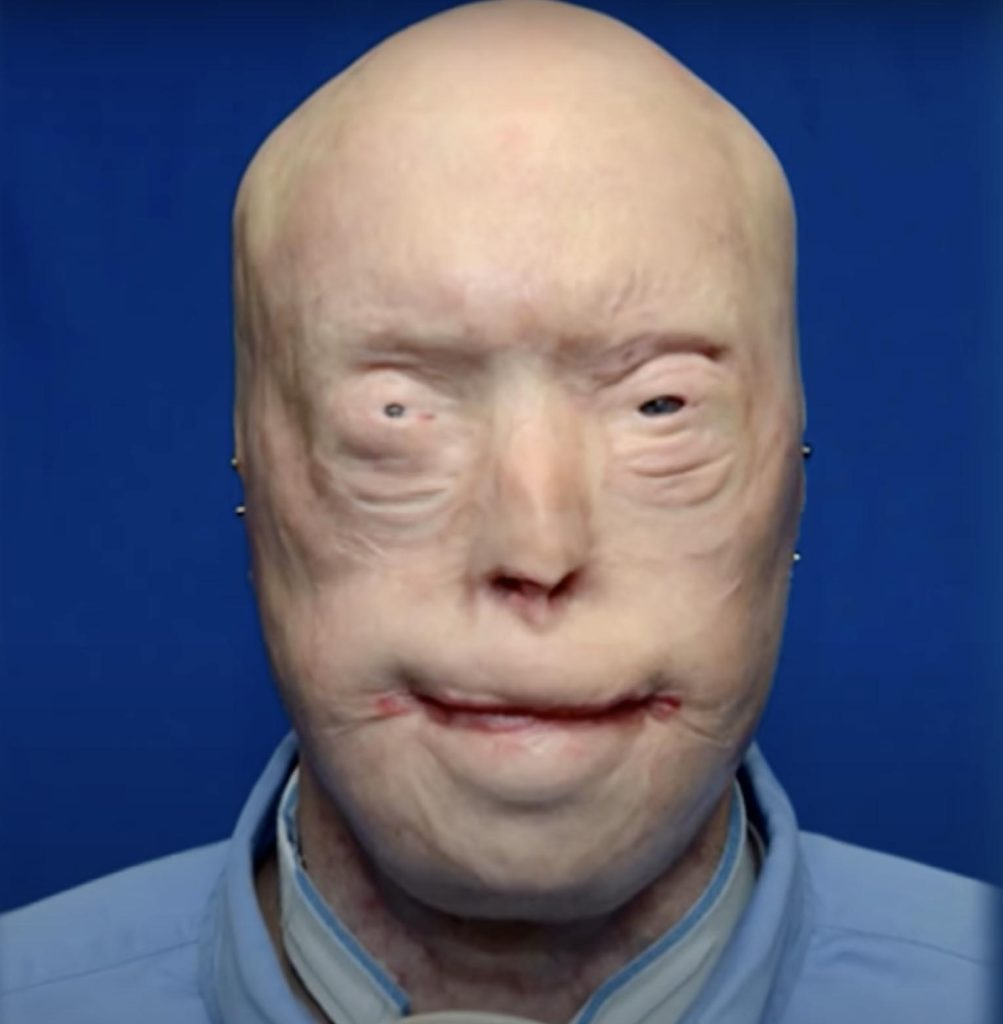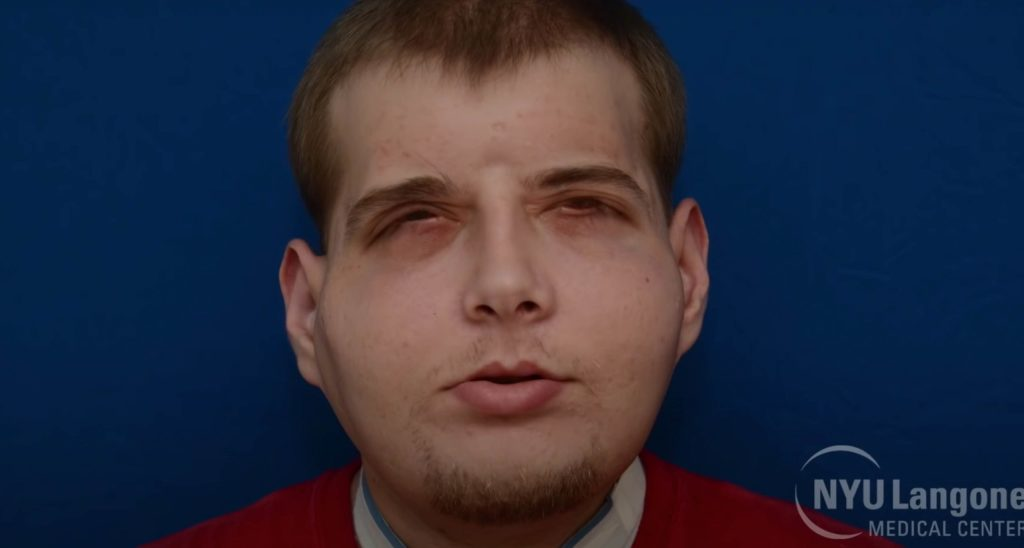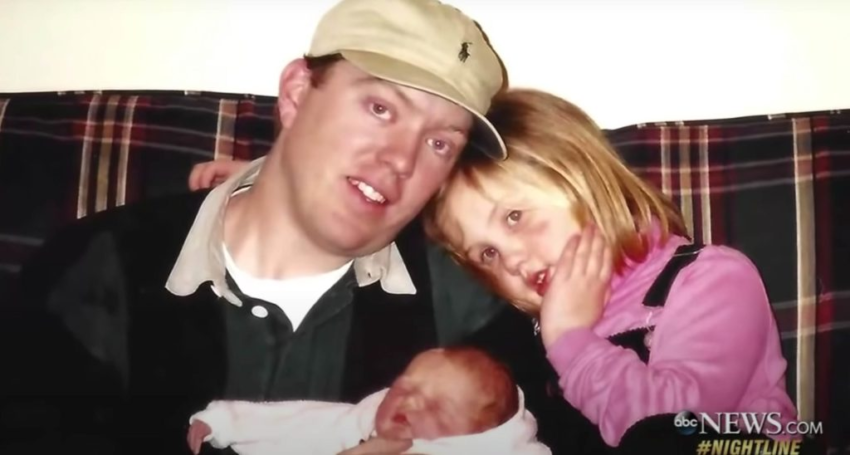When he got the call that would transform his life in 2001, Patrick Hardison was a 27-year-old volunteer firefighter. He went to save a woman who was trapped in a burning house in his little Mississippi town. However, the roof fell while he was searching, badly burning his face. His life was saved by doctors, but he was utterly changed. He was unable to even look in the mirror. However, the 42-year-old has had a dramatic face transplant today, giving those who have suffered facial damage hope.

“A single, enormous scar”
Hardison was hospitalized for sixty-three days following the incident. Physicians covered his head with skin from his legs. But the skin, ears, hair, lips, scalp, most of his nose, and nearly all of his eyelids were gone from Hardison’s face. Because he was unable to blink, doctors covered his eyes with skin grafts and made a little opening so he could see. He recalls, “I was nearly blind.” “I was able to see a little bit.”
His disfigurements made it difficult for him to look at himself in the mirror when he got home, and he continued to live that way for 14 years. In the words of one physician, “living this way is not living.” Even Nevertheless, Hardison made an effort to lead a typical life despite the fact that everyone was staring at him. Initially, Hardison’s three little children were terrified of him. He need family members to help him eat and drive him to doctor’s visits after undergoing more than 70 surgeries. His marriage ended, his tire company folded, and he struggled with despair and painkiller addiction.
However, Hardison then had a meeting with Dr. Eduardo Rodriquez, a highly regarded plastic surgeon. Rodriguez, who is currently the chief of the plastic surgery department at New York University Langone Medical Center, stated that “there was nothing more they could do to help with the type of injury that he had.” Hardison’s face had “one huge scar,” according to the doctor.

The Face Transplant in 26 Hours
But Rodriquez recognized that Hardison possessed the bravery, dedication, and accountability needed for a face transplant—a drawn-out and demanding procedure. To demonstrate that he was mentally and physically prepared, Hardison had to go through exams. Furthermore, he had a 50/50 probability of surviving even if he passed these tests and a compatible donor was identified. Even with immunosuppressive drugs, the body may reject the transplant, and the long-term consequences of the operation are unknown. Hardison, however, was adamant about moving forward.
The untimely passing of David Rodebaugh presented the chance. The 26-year-old, who had won multiple BMX cycling contests, was an artist and a passionate cyclist. However, he passed away from his wounds sustained in a bicycle accident in July 2015. His family consented to donate his face and organs because he was an organ donor.
Rodriguez underwent the most comprehensive face transplant on August 14, 2015. He worked with a group of around 100 medical professionals to remove Rodebaugh’s face and scalp, including his ears and eyelids, and place them on Hardison. The surgery was finished after a long 26 hours. Hardison started to flourish despite the fact that his face remained enlarged for several months. He could go clothes shopping without people ogling him. Hardison was able to see and blink normally following additional surgery. Additionally, he was able to live on his own once more.
“Everyone can have hope.”

Hardison had a new life fifteen months following the surgery. He declared, “Everything has changed.” “I’m able to do things like drive and go swimming with my kids that I haven’t been able to do for fifteen years.” For the first family vacation in a long time, he even took his five children to Disney World.

After five years, Hardison wants to inspire those who are battling injuries. “I have purchased my own property and am in the process of having a house constructed. “I’m writing a book,” he declared. “Because I want to demonstrate to the world that there is hope.” People with facial injuries like his typically end their own lives, he continued. And I get it, but they’re also without hope. “You know, I have to live like this,” they think, but you don’t. Everyone who suffers from that kind of injury has hope.
